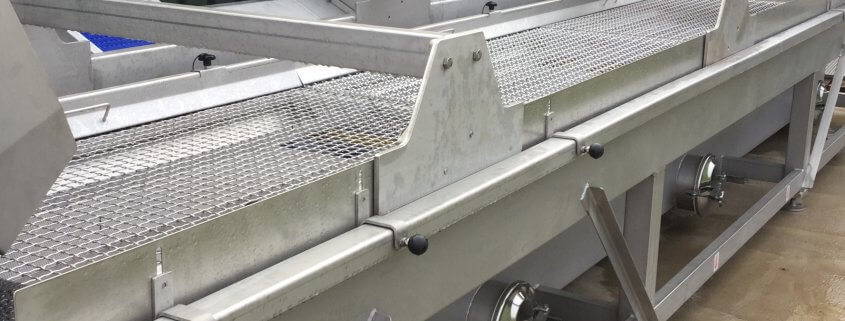Investing for the future
By Nick Turnbull
It's been an interesting winter so far - generally quiet with high pressure allowing work to continue unabated at our intertidal oyster site. This is very unusual, normally deep depressions cross Scotland at this time of year prevent the tides from going out very far and consequently not allowing access to the trestles and bags of oysters. Yesterday when we took the water temperature from the long line site it was 9 degrees Celsius - the highest temperature I ever remember in January. Global warming? It can't all be bad news, as it probably keeps the oysters feeding and growing in months traditionally regarded as dormant months for shellfish. However everything has a knock on effect and we have yet to know how this will affect the marine environment and the species living in it. My younger son fishes for crab and lobster and he is increasingly seeing species that I never saw when I fished, such as spider crab and trigger fish.
Of course just as you get lulled into complacency, winter rears its ugly head in earnest, even if for just a few days. Last week the wind suddenly swung round to the north and a cold blast from the Arctic reminded us just how bad it could be on a north facing shore! The wind was strong and a proper severe gale. Working in these conditions is not easy with hailstones "shot" with force straight at your head, numbing the brain and slowing down physical effort. However it soon passed, the damage sorted and with a return of warm air, the brain or what's left of it, returns to a reasonable thinking process again. Like many working in the marine environment, we are probably obsessed with the weather and tides, they do of course impact on every aspect of our working lives - sorry!
Since the last blog our farm equipment has undergone a complete transformation. Gone is the old "rattling" grader to be replaced by our new quiet water grader. This was a big decision for us as the new grader was a big investment. The French industry, always innovative, has developed these water graders to cause less stress to the oysters. Having used this grader now for a couple of months we can already see the benefits. There are so many other benefits from this grader and coupled with a few ancillary pieces of equipment we can now double or treble the number of oysters we grade in the day.
Sales continued to be good and the run up to Christmas and New Year was excellent. With the quieter weather we managed all deliveries onto the mainland without a hitch. Normally we anticipate "panics" at this time of year, with cancelled ferries and a plan B put into place, so this was so much more relaxing! Now of course we are building up stocks for the next big event, St. Valentine's Day. How quickly this seems to come after the build up to Christmas and New Year. Our thanks go as ever to the Scottish Shellfish staff who manage the complexity of matching orders from remote farms into their factory then delivery out to the retail markets at what can be a difficult time of year. We are all getting better at forecasting the right quantities for delivery.
The oysters are looking and tasting good just now and the meat content is also good. We continue to work towards improving the quality of our oysters and believe by growing our own stock from the hatchery right through to the finished product we now have a better handle on the whole process.
As our customers increasingly gain knowledge of shellfish products and confidence in the shellfish products they are eating, it would be good if we could differentiate from oysters from other parts of the country with tasting notes a bit like you get when buying a bottle of wine or one of my favourite Islay whiskies. Perhaps one for the future?






